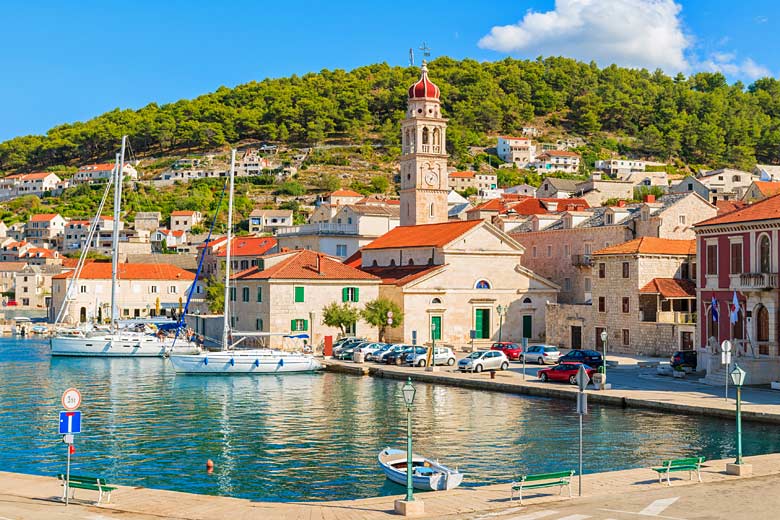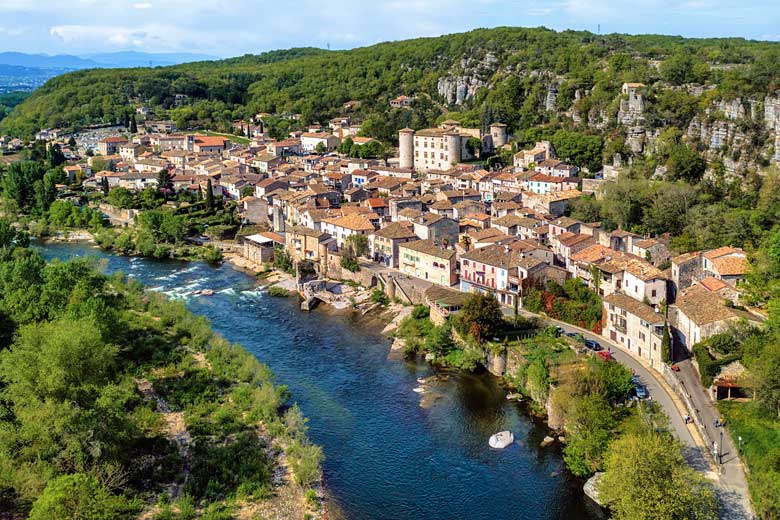How best to experience 8 of the UK's top natural wonders
The term 'natural wonder' often conjures images of far-flung destinations, like Everest's snow-capped peaks, the dizzying depths of the Grand Canyon and the ethereal glow of the Northern Lights.
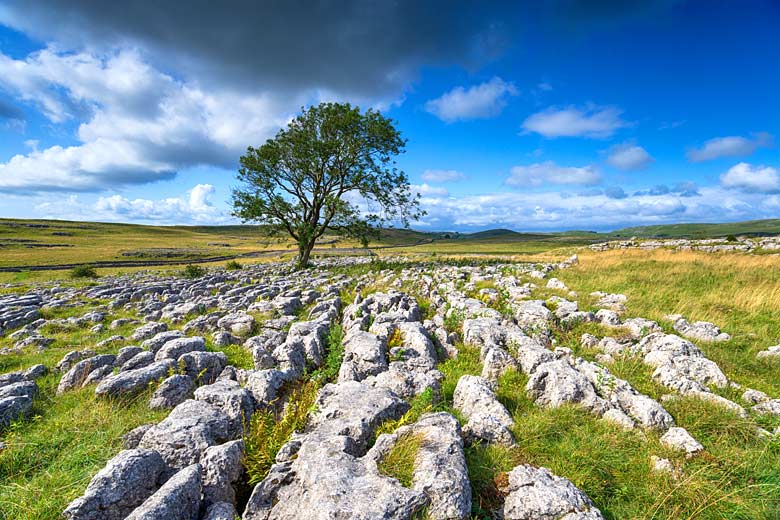
However, the United Kingdom's dramatic countryside, wild isles and varied coastline hide countless natural wonders, just waiting to be seen to be believed.
Whether you fancy swimming in Scottish 'fairy pools', diving the world's longest chalk reef in Norfolk or walking with giants in Northern Ireland, we have the perfect natural wonder for you, and it's closer to home than you think.
Exploring the UK find your great-value home-from-home on a break in the UK with a holiday cottage from National Trust Holidays*.
Speed around sea stacks off the Isle of Wight
The Isle of Wight*'s most famous natural attraction is The Needles. These iconic chalk stacks, rising from the Solent to a razor-sharp point, were once part of a brilliantly white chalk ridge that connected the isle to the mainland.
Hop aboard the Needles Chairlift to effortlessly glide down Alum Bay's famous multi-coloured cliffs to the beach below. Adrenaline junkies can jump aboard a rib excursion and speed around the pinnacles for a glimpse up close.
Or, skip the crowds, pull on your hiking boots and head to scenic Tennyson Down for a bird's eye view; take the longer route and you'll find a Cold War rocket test site and a 19th-century fort along the way.
Dive the world's longest chalk reef in Norfolk
Stretching over 20 miles across Norfolk*, this 100-million-year-old chalk reef has been declared the world's longest, earning it the title of 'Britain's Great Barrier Reef'.
From Cley, famed for its thriving marshes, to fossil-strewn Trimingham, this reef forms part of a longer chalk seam which reaches across the country, passing other chalky landmarks like the White Cliffs of Dover and Wiltshire's Westbury White Horse.
Cromer Shoals Chalk Bed has been hailed as the reason the area's renowned crabs taste so good and a dive around its chasms and arches reveals rare sights like pink sea fan coral, strawberry anemone and leopard spotted goby fish.
Go coasteering on the Jurassic Coast
England's first wholly natural UNESCO World Heritage Site extends from Exmouth in Devon* to Swanage in Dorset*, with dinosaur footprints, bones and fossils in between.
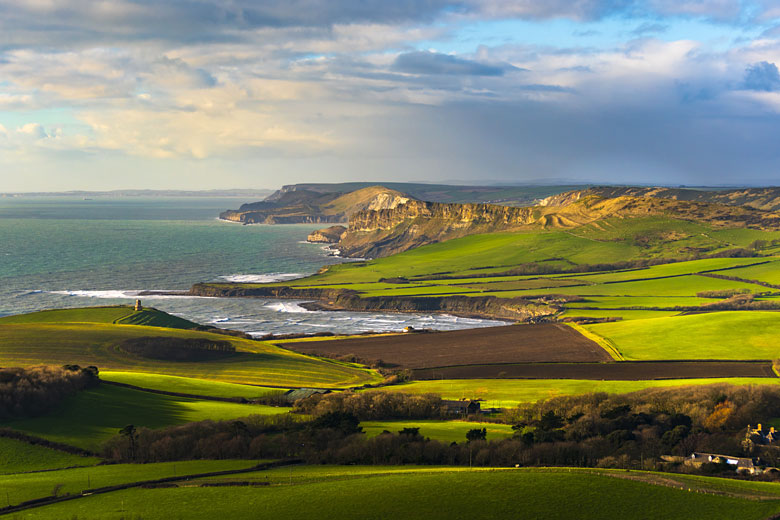
In fact, the Jurassic Coast is like a living museum with its crumbling cliffs, sandy bays and rocky inlets revealing 185 million years of history. With natural wonders like Old Harry Rocks and Durdle Door, it's great for combining adrenaline-fuelled coasteering with a spot of sightseeing.
Climb, leap, scramble and swim your way along this world-famous coastline to reach iconic coasteering spots like Dancing Ledge; keep your eyes open for fossils.
Landlubbers, meanwhile, can explore the area on a guided fossil walk with Charmouth Heritage Coast Centre or Lyme Regis Museum.
Glimpse the Milky Way in Scotland
Britain's largest forest park is officially one of the darkest places in the world, making it excellent for stargazing. Galloway Forest Park was the first designated International Dark Sky Park outside America.
What's more, you don't even need a telescope to enjoy the show, with thousands of stars and planets visible to the naked eye.
If it's clear, you may see the Milky Way or catch a meteor swooshing by. With wild mountains and serene lochs attracting a host of wildlife, "the Highlands of the Lowlands" has lots to see during daylight hours too.
Walk with giants in Northern Ireland
Myth and mystery fill County Antrim in Northern Ireland*'s rugged Causeway Coast, and its number one attraction, Giant's Causeway, is no exception.
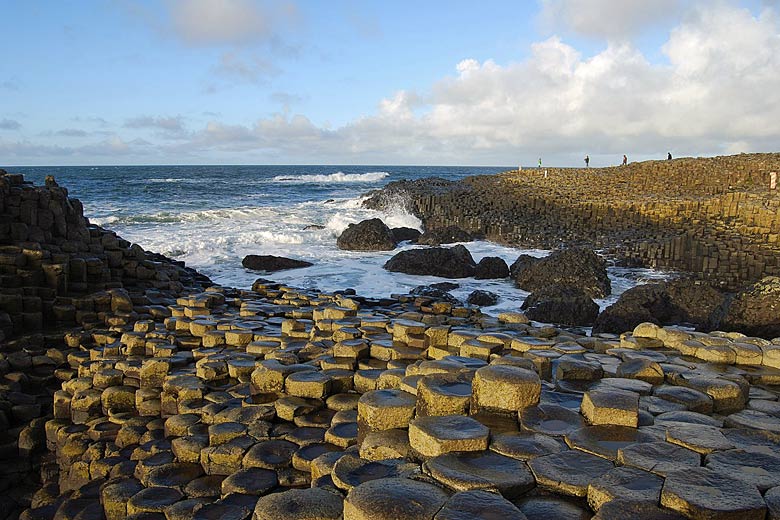
On these hair-raising, windy shores stand 40,000 tightly packed basalt columns, the cylinders, hexagons and pentagons all interlocked, holding their own against the fierce North Atlantic Ocean.
While science declares that this UNESCO World Heritage Site is the result of the cooling of molten lava some 60 million years ago, others believe warring giants are to thank. Feeling active? Various hiking trails lead to the otherworldly spectacle, or you can head to the award-winning visitor's centre, where you can join a guided walking tour.
Be winched into a giant cave in Yorkshire
Time your trip to the Yorkshire Dales National Park* just right and you could be venturing 110 metres beneath its iconic heather-covered moors into one of Britain's largest underground chambers.
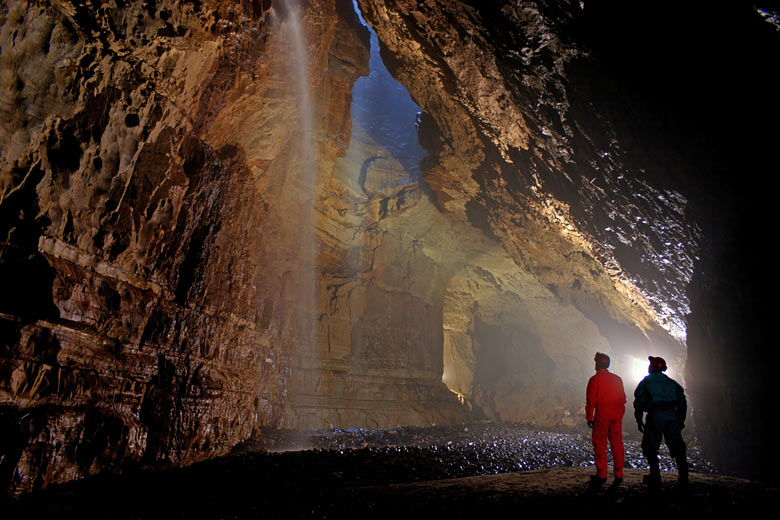
Twice a year, local pothole clubs hold a 'winch-meet' at Gaping Gill, where they lower visitors through Britain's most spectacular pothole, the shaft of which is as long as St Paul's Cathedral is high; it's so deep, it takes a whole minute to descend.
Once inside, you're free to explore this floodlit underworld in Yorkshire*. Gaping Gill's crown jewel is the record-breaking subterranean waterfall, which cascades down into the cave. It's the tallest unbroken waterfall in England, dwarfing Niagara Falls.
Visit the 'clowns of the sea' in Wales
As spring arrives on Skomer Island, the largest in Pembrokeshire*, its slopes are carpeted in bluebells and its cliffs in sea campion, as well as thousands of puffins that descend on its grassy slopes.
Jump aboard a boat from pebbly Martins Haven Beach and in just 15 minutes you'll be watching the comedic creatures waddling around the National Nature Reserve's craggy coves, diving in the shallows and wrestling their writhing eel hauls back to their underground burrows.
Take the scenic circular footpath, spotting guillemot and razorbills along the way, before reaching the puffins' main hangout: the Wick. Keep your eyes peeled on the boat trip too; the waters around the island are filled with porpoises, seals and dolphins.
Swim with the fairies on Skye
When it comes to dreamy wild swimming spots, it's hard to beat the natural rock pools which hide within the Isle of Skye's Glen Brittle. Known for its ethereal beauty, this Inner Hebridean island resides on the farthest-flung reaches of the British Isles.
At the heart of this mountainous island of ancient castles and quaint villages, a steady torrent of fresh spring water cascades down from the Cuillin Mountains, rampaging through a series of waterfalls, before landing in the aqua blue, and icy cold, Fairy Pools, which are as popular with photographers as they are swimmers.
You can take your pick when it comes to which pool to choose; some have rocks to jump from, while others have ledges ideal for sunbathing. Two of the pools are even connected by an underwater arch.
Climate in the UK
| Jan | Feb | Mar | Apr | May | Jun | Jul | Aug | Sep | Oct | Nov | Dec | |
|---|---|---|---|---|---|---|---|---|---|---|---|---|
| Maximum daytime temperature °C |  3 3 |
 3 3 |
 5 5 |
 8 8 |
 12 12 |
 15 15 |
 16 16 |
 16 16 |
 14 14 |
 10 10 |
 6 6 |
 4 4 |
| Hours of sunshine (daily) | ||||||||||||
| Days with some rainfall |  22 22 |
 16 16 |
 19 19 |
 16 16 |
 16 16 |
 16 16 |
 16 16 |
 17 17 |
 18 18 |
 19 19 |
 20 20 |
 20 20 |
The above guide shows the climate in the Yorkshire Dales. Find out more about conditions in every destination mentioned and more in our complete guide to the climate in the UK.
Ready to explore the UK? Check out the latest offers on holiday cottages from National Trust Holidays.
More about the UK
- Overview
- Best time to visit
- Weather by month
- 5-day weather forecast
- Destinations
- Travel advice
- Deals & discounts
UK by month
Jan Feb Mar Apr May Jun Jul Aug Sep Oct Nov Dec
Explore holidays in the sun for less
- Beach holidays
- Family holidays
- City breaks
- Summer holidays
- Winter sun holidays
- Holiday offers
- Top travel brands
- Airlines & flights
- Discount hotels
- Airport parking deals
- TUI
- Jet2holidays
- easyJet holidays
- Love Holidays
- January sales
Airport parking
- Manchester Airport
- Stansted Airport
- Bristol Airport
- Luton Airport
- Birmingham Airport
- Edinburgh Airport
- Gatwick Airport
- Glasgow Airport
- Newcastle Airport
Airport lounges
- Manchester Airport
- Birmingham Airport
- Bristol Airport
- Edinburgh Airport
- Glasgow Airport
- Heathrow Airport
- Newcastle Airport
- Stansted Airport
- Gatwick Airport
Be inspired
Get your weekly fix of holiday inspiration from some of the world's best travel writers plus save on your next trip with the latest exclusive offers
We promise not to share your details















